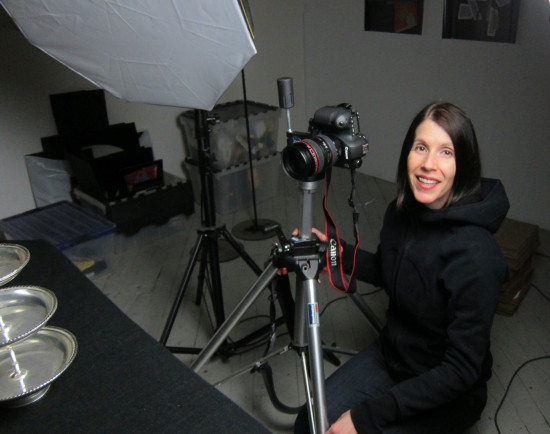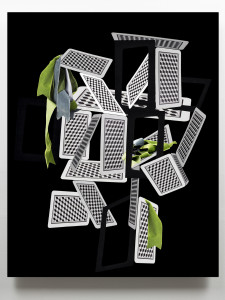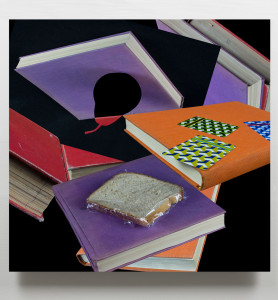
Our Scholastic Awards alumni are an incredibly talented and diverse network. While many may not realize it, we follow their paths long after they received their Awards. Every month we highlight a Scholastic Art & Writing Awards alumnus who continues to approach their work and day-to-day life with the creative passion that was recognized when they first received their Scholastic Awards.
With a new year, we have a new Alumni Story! Nicole Tschampel received her Scholastic Award for a book of prints she made while attending high school in Columbus, Ohio. Now a working artist and educator. Check out the interview below to hear about Nicole’s current and upcoming projects, how she balances being an artist and an educator, and what educators inspired her!
Scholastic Art & Writing Awards: Tell us about receiving your Scholastic Award. What work did you submit?
Nicole Tschampel: I attended an Arts & Academic charter high school in Columbus, Ohio where I was fortunate to be surrounded by educators who knew about the Scholastic Awards. Over the course of my four years I submitted dozens of pieces – the process was considered part of our educational experience.
I was awarded a gold key for s piece that was an 18” x 24” book made out of prints of cocoons. My high school had a printmaking facility and I found the methodical aspects of printmaking to be very meditative. The book was bound with very substantial handmade paper. My parents let me take over their garage with my papermaking projects! I was never taught how to make paper so mine was absurdly thick and took days to dry.
When I received the award I didn’t truly understand its significance. Comprehension so often comes in hindsight. I remember my teachers excitement and attending the award ceremony in Washington DC with my parents — the ceremony itself was on the stage of the Kennedy Center and that was particularly meaningful for them. I remember the quality of the light outside after the ceremony as we stood on a terrace off the Center. I remember an overwhelming sense that creating art was valued and significant.
SAWA: Do you still have your Gold Key pin?
NT: My parents have both the pin AND the piece!! The book is still in the original shipping box in their basement!
SAWA: What made you decide to pursue a career as an educator?
NT: I grew up in a household that valued both education and the arts. My parents sacrificed to make sure that my brother and I attended excellent schools and were very engaged with our day-to-day activities. They took us to museums, my mother often drew with me as a child, my father helped me build all sorts of things, and we routinely went to the library.
My parents are curious and inquisitive and I am acutely aware of how that continues to influence my priorities and decision-making. I love to explore and meet new people. I enjoy zealous conversations and learning new skills. Teaching seemed like a natural trajectory.

SAWA: Is there a teacher you had growing up who inspired you?
NT: I had multiple formative educational experiences that inspired me from a cross disciplines—History, English, Science, Music, and Theater in addition Visual Arts. Not only do I think back fondly of almost EVERY teacher that I worked with (literally- first grade through graduate school), most of the schools that I attended had amazing administrators that were accessible to students. I lucked out.
It’s also interesting how my handful of negative experiences with teachers has informed me as an educator—it’s very affecting to be in a classroom in which you don’t feel heard or understood. You can learn a tremendous amount by witnessing behavior that you don’t want to emulate.
SAWA: Do you find it difficult to balance your day job and your work as an artist?
NT: YES. Absolutely!!
It is a daily struggle to try to find balance. And it’s not just balance between my studio practice and my teaching- add to that juggling act family that doesn’t live locally, my relationship with my husband, exercise, time for the quotidian (laundry, cleaning, etc), time to read, time to see exhibitions and do studio visits with other artists, time to do nothing…. it’s always a series of compromises.
SAWA: Do you think being an artist has an effect on the way you teach in the classroom?
NT: Being a practicing artist is the most valuable thing that I contribute to the classroom dynamic. The relationship between my studio practice and my teaching is reciprocal and energizing. I am fortunate I am to have a job in which I get to think and talk about artwork with great people everyday.

SAWA: What projects are you currently working on?
NT: In my current work I am creating fictional tableaus to explore the links between magic, faith and the notion of being of an artist. Much of the newest work uses photography as a tool to suspend and distort reality. I photograph a diverse range of objects—quotidian, personal and fantastical to create a visual vocabulary that I can use to formalize and structure compositions.
These objects are photographed on simple black backgrounds, which are separated from the objects for compositing. These negative spaces (cutouts) then reappear in the compositions functioning as portals and patterns that trace back to the photographic and digital process used to create the works.
Two years ago I made the decision to pause exhibiting to allow my work processes to evolve. I knew without the pressure of a deadline that I would feel far more comfortable with failure in the studio—a very natural but difficult part of growth. It was a complicated decision at the time but I’m thrilled about my new body of work and in retrospect, any angst over the decision almost seems silly. I’m so glad I took the time to develop my studio practice.
SAWA: Do you have a preferred medium?
NT: Collage and Assemblage based on the process of accumulating, and then visually reducing and redacting my source materials is the foundation of my conceptually driven project based multi-media practice. The redaction demonstrates how easily methods of communication can be disrupted and content transformed.
In a perfect world, I would love to work with materials that are cheap and light!! Unfortunately that’s rarely the case! The conceptual content of the work informs the medium.
SAWA: What advice do you have for aspiring artists?
NT: Keep asking questions.
Curiosity is wildly fruitful.
